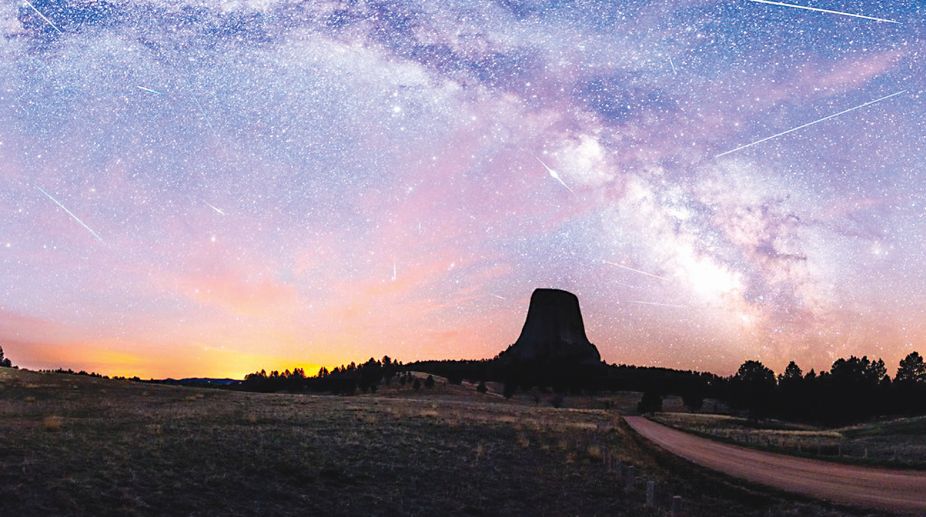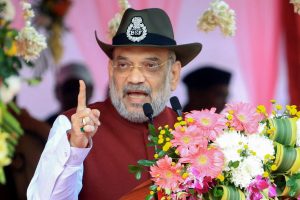Scientists have received signals from the very first stars ever, and could use them to unlock some of the most profound mysteries of the universe.
The new discovery sheds light on how stars — and everything that surrounds us — began. It is a picture of the beginnings of light as we know it today, scientists write in two breakthrough papers published in Nature recently.
And the findings could further illuminate some of the most central mysteries in our universe — how our own galaxy and its stars was formed, and the dark matter that is thought to surround us but remains entirely mysterious.
Scientists examining radio waves from deep in the universe found the faintest of signals from the moment the earliest stars “switched on” — just 180 million years after the birth of the universe. It showed the effect those early stars lighting up had on the hydrogen around them. Ultra-violet radiation disturbed the hydrogen atoms, leading to a characteristic signal emission.
Before all that, the universe was dark and filled mostly with hydrogen gas. How the stars of today could have formed out of such a place remains difficult to imagine, given that most of the material found scattered through the universe today was itself formed in stars. Alan Rogers, one of the scientists from Massachusetts Institute of Technology, said, “This is the first real signal that stars are starting to form, and starting to affect the medium around them.
“What’s happening in this period is that some of the radiation from the very first stars is starting to allow hydrogen to be seen. It’s causing hydrogen to start absorbing the background radiation, so you start seeing it in silhouette, at particular radio frequencies.”
“The whole history of the early universe was vital for seeding all of the structures that we see in the universe today,” said Carole Haswell, Head of Astronomy at the Open University. “So our own Milky Way galaxy would have begun forming around that time, and the properties of those first stars could have profoundly influenced the way galaxies built up.”
One of the stranger parts of the findings was that the hydrogen in the early universe must have been far colder than we’d previously thought — about twice as chilly as expected. It isn’t clear why that is the case, but finding out could offer an understanding of dark matter, one of the most mysterious things in our universe.
Dark matter has never been seen but is thought to make up most of the mass of the universe. Scientists think that the cold could be the result of an interaction between “normal” matter and this dark matter — offering a glimpse at a previously unseen physics.
If dark matter is interacting with the matter that we can see, then we could potentially infer certain important details about what it actually is. For the moment, that is just a suggestion and a way of explaining the unexpected data — but if proven right could shed light on one of the greatest mysteries of the universe.
“The question of the nature of dark matter ranks amongst the greatest astrophysical mysteries of our age,” said Poshak Gandhi, associate professor in the University of Southampton’s Astronomy Group. “Global efforts over the past several decades have failed to identify a clear candidate source. This is almost embarrassing given that dark matter appears to be at least five times more abundant (in mass) than all the normal matter that we are able to perceive!
“These new studies open up new possibilities in this research field. A strong deficit in an expected radio signal from the time when the universe was in its infancy could be due to the influence of dark matter particles. If confirmed, we need to revisit ongoing searches for dark matter particles.”
All of that new understanding is based on discoveries from a small radio antenna sitting in the desert. The important detection was found among sources of noise that can be a thousand times louder than the actual signal, which Peter Kurczynski, from the US government’s National Science Foundation likened to “being in the middle of a hurricane and trying to hear the flap of a hummingbird’s wing”.
To manage to get a peek at the beginnings of the universe among all that distraction showed the power of science, said researchers away from the new work. “This allows us to apply human ingenuity and logic to things that are well beyond our everyday world, and learn things that at first glance we didn’t know anything about,” said Haswell. “This is a really nice example of how you can point a radio detector at the sky, and just by plugging away and thinking about the implications, you can get quite a long way.”
Part of the difficulty of the experiment is that it requires incredibly precise work to find something that is missing, rather than something that is there. The research community hailed the breakthrough technical work done by the scientists behind the study in finding their results.
“This is one of the most technically challenging radio astronomy experiments ever attempted,” said Ron Ekers, an adjunct professor at Curtin University. “The lead authors include two of the best radio astronomy experimentalists in the world and they have gone to great lengths to design and calibrate their equipment so that they have convincing evidence that the signal is real. Dozens of other groups around the world have searched unsuccessfully for this signal and, with such a difficult experiment; we will have to wait for independent confirmation.”
The difficulty of making the observation means that scientists have been cautious about hailing the results until they can be thoroughly confirmed. But if true they will mark a discovery that could open the door to many new kinds of breakthroughs, researchers said.
“The apparent detection of the signature of the first stars in the universe will be a revolutionary discovery if it stands the tests of time,” said Brian Schmidt, a Nobel Prize-winning astrophysicist.
“While the detection appears robust, it is an incredibly challenging measurement, and needs to be confirmed. The fact that the detection is much stronger than expected, and easily explained, is particularly exciting.
“Exciting because it might reflect new physics (as suggested in the paper and companion paper), but also exciting because it suggests that the upcoming generation of radio telescopes will have lots to look at.”
The Independent











